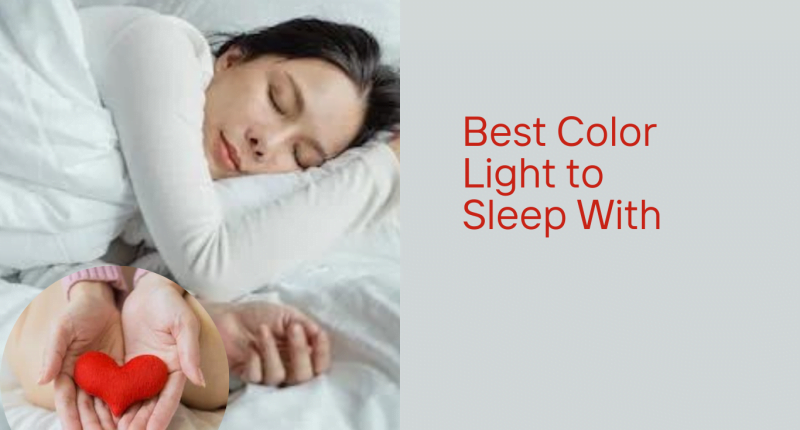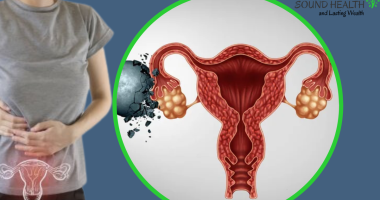Sleep is essential for a healthy lifestyle. It helps to maintain physical and mental well-being. Getting a good night’s sleep is not only about the quantity of sleep but also the quality of sleep. One of the factors that affect the quality of sleep is the color of light we sleep with. This article will discuss what is the best color light to sleep with, and how it affects our sleep.[1]
The Best Color Light to Sleep With is Red
When it comes to the best color light to sleep with, red is the winner. Red light has the least impact on the circadian rhythm and melatonin production. This means that it won’t disrupt your sleep cycle or affect the quality of your sleep. Additionally, red light has a calming effect on the body and mind, which can help you fall asleep faster and improve sleep quality.
The Circadian Rhythm
The circadian rhythm is a natural biological process that regulates the sleep-wake cycle in humans. It’s essentially an internal 24-hour clock that responds to environmental cues, such as light and darkness, to determine when we feel awake or sleepy. When it’s dark, the body produces melatonin, a hormone that promotes sleep. When it’s light, melatonin production decreases, and the body feels awake and alert.
Different Colors of Light and Their Effect on Sleep
- Blue Light and Sleep
- Red Light and Sleep
- Green Light and Sleep
- Yellow Light and Sleep
Blue Light and Sleep
Blue light is known to disrupt the circadian rhythm and melatonin production. It’s commonly emitted by electronic devices, such as smartphones, tablets, and computers. Exposure to blue light before bed can suppress melatonin production, making it harder to fall asleep and stay asleep. It’s best to avoid blue light before bed or use a blue light filter on electronic devices.
Red Light and Sleep
Red light has the least impact on the circadian rhythm and melatonin production. It’s a calming color that promotes relaxation and can help you fall asleep faster. Additionally, red light has been shown to improve the quality of sleep, particularly in individuals with insomnia. You can use a red light bulb or filter to create a sleep-friendly environment.
Green Light and Sleep
Studies on the effects of green light on circadian rhythm and melatonin production have been mixed. While some studies have shown that green light can help to reset the circadian rhythm and improve sleep quality, others have found no significant effects on melatonin production or sleep architecture.
Yellow Light and Sleep
Yellow light can have both positive and negative effects on sleep, depending on the context and timing of exposure.
On the one hand, yellow light has a lower color temperature than blue light, which is emitted by electronic devices and has been shown to suppress the production of melatonin, a hormone that helps regulate sleep-wake cycles. Yellow light, on the other hand, is less likely to interfere with melatonin production and may be less disruptive to sleep.
In fact, some studies suggest that exposure to warm-colored light, including yellow light, in the evening hours can actually improve sleep quality and quantity by promoting relaxation and reducing the alertness that may keep us awake. This is why many sleep experts recommend dimming the lights and using warmer light sources in the hours leading up to bedtime.
However, it’s worth noting that exposure to yellow light or any other light source too close to bedtime can still interfere with sleep by delaying the onset of melatonin production and disrupting the body’s natural circadian rhythms. For this reason, it’s generally a good idea to limit exposure to bright light and electronic devices in the hour or two before bed, regardless of the color temperature of the light source.
How to Choose the Best Color Light for Sleep
When choosing the best color light for sleep, consider your sleep environment, lighting fixtures, light filters, and screen time. Create a sleep-friendly environment by minimizing exposure to blue light, using the right lighting fixtures, and limiting screen time before bed.
Also read | Healthiest sleeping position for neck: back, side or stomach?
Other Factors Affecting Sleep Quality
Temperature, noise, and comfortable bedding are other factors that affect the quality of sleep. It’s important to create a comfortable sleep environment that promotes relaxation and restful sleep.
In conclusion, the best color light to sleep with is red. Red light has the least impact on the circadian rhythm and melatonin production, which helps to promote relaxation and improve the quality of sleep. However, it’s important to consider other factors that affect sleep quality, such as temperature, noise, and comfortable bedding.
To create a sleep-friendly environment, consider using a red light bulb or filter, using the right lighting fixtures, and limiting screen time before bed. By making these adjustments, you can improve the quality of your sleep and wake up feeling refreshed and rejuvenated.
FAQs
A: While some colors of light are better than others for sleep, it’s ultimately up to personal preference. It’s important to choose a color that promotes relaxation and helps you fall asleep faster.
A: Yes, a nightlight can be used for sleep. However, it’s important to choose a color that promotes relaxation and doesn’t disrupt the circadian rhythm.
A: While your phone can be used as a nightlight, it’s best to avoid using electronic devices before bed as they emit blue light, which can disrupt the circadian rhythm and melatonin production.
A: It’s best to avoid using electronic devices at least 30 minutes before bed to allow the body to produce melatonin and promote relaxation.
A: Sleeping with the lights on can disrupt the circadian rhythm and melatonin production, which can affect the quality of sleep. It’s best to create a sleep-friendly environment by using a red light bulb or filter and limiting exposure to blue light.









